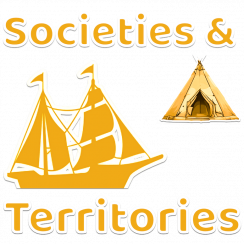The road network was not very well developed in 1745. Every region had roads that led to the church in the village, and sometimes to town, but there was only one main road, the Chemin du Roy (the king’s road). Since 1737, it had linked Québec and Montréal. There were still no roads that led to the interior of the continent. Despite this, there was one easy way of getting around: on the rivers and lakes that crisscrossed the country. These were the “paths that walked.” (les chemins qui marchent.) The St. Lawrence River was the main road and its tributaries (the small rivers and streams that flowed into it) were secondary roads.
When the colonists picked land to settle on, they naturally preferred those that bordered a river. Because of this, the country was divided into long narrow strips of land so that as many people as possible could have direct access to the river. When there was no more waterfront land available in a region, people would settle on a second row of land.
Rivers were also important for the fur trade. The rivers made it possible for people to travel from Montréal to the Great Lakes, and then down to New Orleans and even to the heart of the Great Plains. People could fill a boat with cargo and furs and travel much faster on water than they could by foot. Travelling up current was hard work, but when people travelled downriver, the boat was carried along by the current of the “path that walks”.
The only limitation to waterways was rapids, which limited travel. People sometimes had to remove their boats from a river and transport it by land until they were able to safety by the river again.
Author: Léon Robichaud. Translation and adaptations by LEARN.
See also – Traces of the past:

